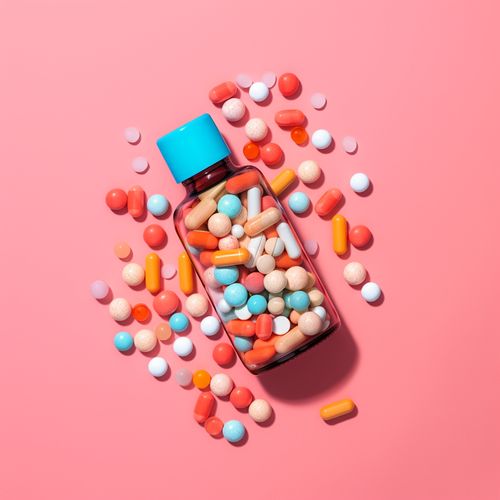Contrary to popular belief, drug addiction goes a lot further what we’ve come to expect. Cannabis, Cocaine, Heroin – while these are some of the big names in the drug addiction world, there are a lot of other drugs out there which people become addicted to. In fact, some of these drugs are legal.
In the UK, a lot of the most addictive drugs are legal and widespread (making them somewhat easy to get). Some of these drugs provide the consumer with an “emotional high” for short periods of time which, as you might have guessed, tempts them to take the drug regularly.
Below we have put together a list of the 10 legal drugs which are most addictive. Some of these can only be received from your GP, while others are more common and are found in your average UK household.
10 – Caffeine
Let’s start with caffeine – a drug which the majority of us consume daily without realising the underlying effect that it really has. Caffeine is the primary ingredient in coffee and is the most common drug that we consume, but the majority of us don’t think of it as a drug. You can also find caffeine in tea, fizzy drinks (especially Coca Cola), and chocolate. The chances are that you consume at least one of these things several times a week, thus why it is such a difficult substance to avoid.
Research has shown that more than 60% of UK adults consume a minimum of one cup of coffee each day. In the UK, about 70 per cent of this is instant coffee containing around 60mg of caffeine per cup.
A low amount of caffeine consumption isn’t unhealthy. In fact, there are even studies which show caffeine can support metabolic function. However, high amounts of caffeine can lead to health issues such as insomnia, high heart rate, anxiety, and could even make you more nervous than usual.
It’s not uncommon for caffeine consumers to build a tolerance against caffeine and as a result, they need to consume more of it to get their “kick” and feel a difference. If you try to completely cut caffeine out of your diet after having a high tolerance, you will be hit by a plethora of withdrawal symptoms (specifically headaches, nausea, and in some cases, temporary depression).
9 – Ritalin
Ritalin is a prescription medication that is commonly used for ADHD treatment and has a similar impact on your brain as cocaine does. The primary active ingredient in Ritalin is methylphenidate which stimulates the brain.
When a Ritalin tablet is crushed to a powder and sniffed by someone, the drug has an almost instant effect which can lead to them becoming quickly addicted.
Some of the side effects of using Ritalin are lack of appetite, heart palpitations, psychosis, and in the long run, high blood pressure. Using Ritalin as a long-term drug is not recommended as it can cause internal organ damage – even as a prescription drug.
Ritalin use is on the increase. Statistics from the NHS confirm that the numbers of prescriptions for Ritalin quadrupled from 158,000 in 1999 to 661,463 in 2010.
8 – Adderall
Adderall is more commonly found in the US, however, it is frequently used by students who struggle with focusing and is another common ADHD medication. Although a prescription drug, over the last decade or so we have seen Adderall become a popular recreational drug. Much like Ritalin, Adderall works similar to how cocaine interacts with our brains through stimulation.
Adderall is a tablet which contains both amphetamine and dextroamphetamine and while very similar to Ritalin, it has been proven to be more addictive and its effects are longer-lasting too.
Adderall works by promoting dopamine production in your brain which as a result. Some of the side effects of Adderall include insomnia, restlessness, headaches, and due to lack of appetite, weight loss. A study that was conducted in 2012 showed that over 116,000 Americans had been through a rehabilitation program for Adderall or a similar drug.
7 – Valium
Valium has been around for decades and is primarily used to treat severe anxiety, insomnia, in some rare cases, it can be used to help treat seizures. Due to how this prescription drug is accompanied by many sedative properties, it’s not uncommon for drug abusers to seek Valium. Otherwise known as Diazepam, Valium can come with a wide range of different side effects. This includes drowsiness, balance problems, double vision, fatigue, or muscle spasms.
After taking Valium for a while and either building a tolerance for the drug or becoming dependent on it, stopping this medication can be difficult. Withdrawal symptoms include nausea, headaches, insomnia, and sweating.
6 – Fentanyl
The first narcotic on our list is Fentanyl, a drug which while up to 100 times as strong as morphine, isn’t as addictive. Fentanyl isn’t a commonly prescribed drug and is only prescribed to patients who live with a chronic condition which results in unbearable pain. When abused, the drug can lead to fatalities.
Fentanyl is an opioid, unlike morphine, and will begin to be effective shortly after it has been taken. It’s rare that Fentanyl is prescribed to a patient if they’ve never been prescribed either an opioid or an opiate in the past.
Some of the side effects that there are to Fentanyl are vomiting, nausea, fatigue, and itchiness. Overdosing on this drug will result in respiratory problems which will inevitably lead to death. When mixed with cocaine, Fentanyl can produce a deadly drugs cocktail.
5 – Morphine
Morphine is a somewhat “numbing” drug which is frequently used in hospitals to treat pain. Given that it numbs the body and changes the way that we feel, Morphine is very addictive for a lot of people. As a result of long-term Morphine use, the drug will slowly become less effective. After long-term usage, withdrawal symptoms will kick in quickly after it isn’t being taken anymore. These symptoms include muscle aching, nausea, sweating, and restlessness.
4 – Seconal
Seconal is classed as a barbiturate, a type of drug which is used for treating anxiety and insomnia. This drug is typically only used for short-term treatment as it can be very addictive in the long run. It is also used to help calm patients before they undergo surgery.
If Seconal is taken for a long period of time and treatment is stopped, withdrawal symptoms will begin to kick in. Some of these symptoms include anxiety, insomnia, twitching, and obscure dreams. In some cases, withdrawal symptoms can span to seizures and in some very rare situations, death.
3 – OxyContin
OxyContin is another type of medication which is used for pain management although as a result of taking this drug, a sense of “euphoria” can be felt – thus, an addiction can be caused. OxyContin is a slow-release medication which can take up to 12 hours to kick in.
When mixed with alcohol, OxyContin can be lethal and will result in an overdose. Although it isn’t nearly as strong as other drugs (such as heroin), it’s known as an incredibly addictive legal drug.
Moreover, the long-term use of OxyContin can lead to serious health issues, such as liver damage and respiratory problems. The abuse of this medication has become an epidemic in the US, leading to countless cases of addiction, overdose, and death.
It is important to note that OxyContin should only be taken under the supervision of a healthcare professional, and should never be shared with others. If you or someone you know is struggling with addiction to OxyContin or any other substance, seek help immediately. There are many resources available, such as rehabilitation centres and support groups, that can aid in the recovery process and prevent further harm.
2 – Alcohol
As we near the end of our list, we finally come to alcohol – one of the most popular addictive substances that there is. Alcohol is classified as a depressant and while it can help to lift the drinker’s mood and even help numb physical pain, it has a serious impact on their behaviour. As a result of excessively drinking alcohol, they may become increasingly angry, struggle to concentrate, and could even drop into unconsciousness without a moment’s notice.
Long-term alcoholism can lead to more severe health issues including liver and kidney damage, high blood pressure, sexual problems, and even brain damage.
1 – Nicotine
Around one-third of those who inhale nicotine in one form or another become addicted and once the addiction has started, it can be incredibly difficult to get rid of. Ask anyone who has attempted to stop smoking in the past – Nicotine is a difficult substance to get out of your life.
Nicotine acts as a stimulant and can help to relax your body as it gives you an adrenaline rush. As a result of this adrenaline rush, your blood pressure and heart rate both increase.
Nicotine is typically found in cigarettes, chewing tobacco, and as of recent years, e-cigarettes and vapes. Although e-cigarettes are quickly taking over and they eliminate tobacco from the equation, they still involve nicotine – an incredibly addictive substance.
Picture Credit: Anthony Cunningham for Zoom Testing
Zoom Testing is a leading UK drug testing company and a supplier of Drug Test Kits.
This post was originally published in September 2017 and has been updated regularly since.





